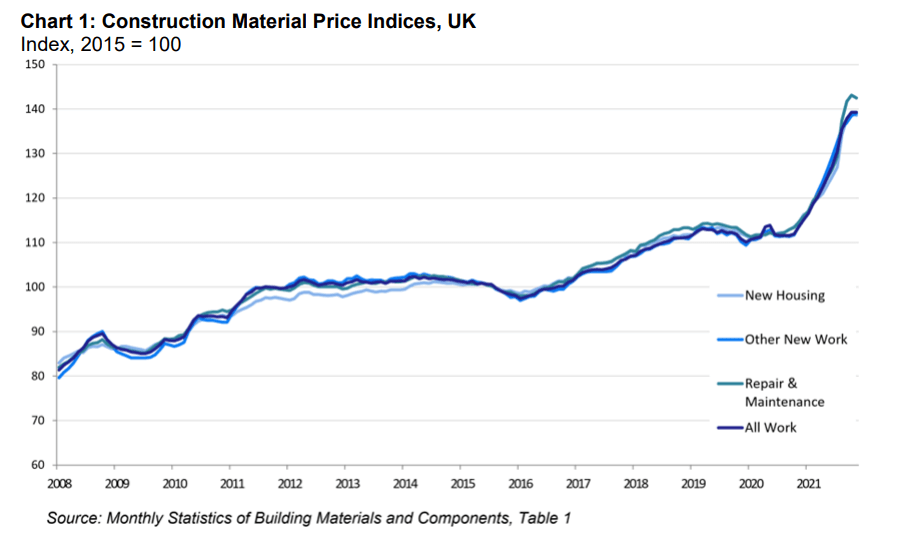Concrete is all around us. We live among concrete giants and walk along concrete paths. It’s constantly under our feet and above our heads. Strong, durable, and relatively cheap, it has existed as a construction material since ancient civilisation. However, concrete has a massive environmental impact and, as the world struggles to keep global temperatures below rising 1.5 degrees, is concrete becoming a primary antagonist in the fight against climate change?
It’s time to think deeper about how we design buildings for multi-century use and move from the throw them up and rip them down mentality and think wider about city planning.
30 gigatonnes (Gt) of concrete is poured each year – a 300% increase from 40 years ago. Concrete is a metaphorical beast of carbon emissions, currently representing 7-8% of the world’s annual emitted CO2. Its production alone generates 2.8 billion tonnes of carbon dioxide each year. If the concrete industry was a country, only the US and China would be higher emitters. Concrete production also takes up 10% of global industrial water use. These are but some of the shocking statistics.
Concrete’s durability is its greatest asset, but it has an adverse effect in extreme weather. During Hurricane Harvey in 2017, Texas saw record levels of rainfall, particularly in urban areas. Houston, with its mass urbanisation, experienced a severe flood impact. Water simply couldn’t be absorbed into the ground, causing the mass flooding that resulted in 103 deaths in Texas. With a dramatic increase in natural disasters due to global warming, these extreme weather events will become more regular and severe, and the widespread use of concrete could become a catalyst for disasters if we don’t focus on biodiversity and better planning of cities.

It’s not just flooding either, concrete has the potential to raise temperatures. Concrete’s heat capacity is far greater than air, meaning that it absorbs and retains heat extremely well. With rising global temperatures, this presents a real problem, mainly in the form of Urban Heat Islands (UHI), wherein urban areas are considerably warmer than their more rural counterparts. In research published in Proceedings of the National Academy of Sciences, it was found that extreme heat has tripled in over 13,000 cities since the 1980s. Now, 17% of cities are experiencing an extra month of extreme heat, further accelerated by the surrounding concrete structures and pavements.
Concrete is – for lack of a better phrase – such a foundational building block of society that lessening its environmental impact is going to be hard. There are already a number of potential ‘greener’ concrete alternatives that are in varying stages of development and utilisation. From fungi-based mycelium bricks, to graphene, to industrial hemp, these methods allow for a considerable reduction in the amount of concrete needed in construction. However, many of these are still in their infancy, facing real issues in mass adoption. Mycelium’s lifespan is much shorter than concrete, graphene is still very far off being an alternative, and HempCrete has 20 times less compressive strength than traditional concrete. Alternative solutions are needed urgently as well as a dramatic change in city planning.
Right now, one of the most promising concrete alternatives is another material humanity has been using for millennia – wood. Mass-timber is wood that is engineered to function similarly to concrete, and entire structures have been built with it. According to WoodWorks, mass-timber buildings increased by 50% in the US between July 2020 and December 2021, with over 1384 structures having been built as of March 2022. But, with the global mass-timber market not even at $1 billion in 2020, and annual increases expected to be less than 14% p.a., it’s not going to be a massive change globally. Wooden skyscrapers may soon be among us, but, with their burn rate only slightly better than normal timber, it will be a concern for many cities’ safety regulations.

Urbanisation innovation is also taking steps to move away from mass concrete use. One such method that has picked up steam in recent years is the concept of ‘sponge cities’. Coined by Professor Kongjian Yu of Peking University, sponge cities are urban areas that contain an abundance of natural spaces like parks, fields, and gardens. The more natural areas there are, the more rainwater can be absorbed to prevent flooding and runoff that can cause water pollution. China has been a frontrunner in this innovation, setting out a target in 2015 for 80% of its cities to be able to accumulate and recycle most rainwater by 2030, but other nations aren’t far behind. Auckland is currently the spongiest city in the world, as surveyed by engineering consultancy Arup.
Climate change is not the only stressor within the concrete industry, supply chain issues are also rapidly appearing. Delivery times have become drastically impacted by not only the Covid-19 pandemic, but the recent Russian invasion of Ukraine. Deliveries by cargo ship have risen to 70 days, a massive jump from the 40 day period pre-pandemic. Prices are soaring too, shipping container prices have risen from an estimated $4000 to $20,000.

Ultimately, for now, concrete is fundamental in construction and urbanisation, and it isn’t going anywhere anytime soon. But just turning a blind eye to this material is over. Without alternatives, we must find ways of making concrete’s production and usage carbon neutral in this critical global climate crisis. We must address the hold that concrete has over us and consider why so many of the buildings built in the 60s, 70s, and 80s have already been demolished and rebuilt. We must think deeper about architecture and ensure buildings are developed for much longer-term usage – ideally for many centuries ahead, not just decades. The focus now must be on city planning, ensuring the right decisions are being made for the long-term survival of buildings, cities and us, the inhabitants.

Share your thoughts
No Comments
Sorry, the comment form is closed at this time.